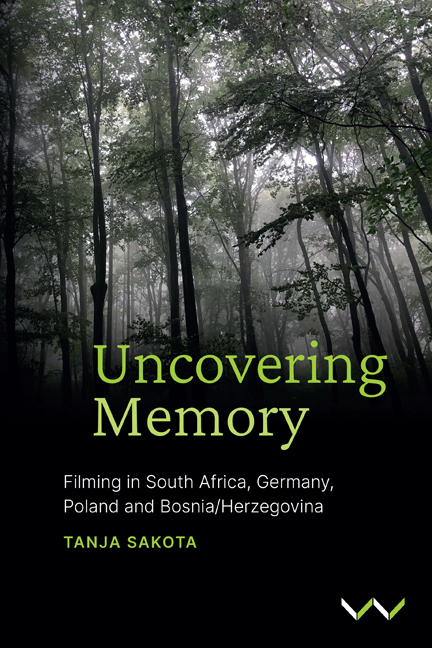Book contents
- Frontmatter
- Dedication
- Contents
- List of Images
- Foreword
- Acknowledgements
- Map of Africa and Europe
- Practice-Based Research, Teaching and Learning
- Part I Working With Students: Cape Town, Johannesburg, Berlin
- Part II Working With Peers: Constitution Hill, Johannesburg
- Part III Working With Myself: Poland, Germany, Bosnia/Herzegovina, South Africa
- Moving Forward
- Film Credits
- Glossary of Terms
- Notes
- Bibliography
- Index
Chapter 11 - Personal interpretations of political spaces
Published online by Cambridge University Press: 24 November 2023
- Frontmatter
- Dedication
- Contents
- List of Images
- Foreword
- Acknowledgements
- Map of Africa and Europe
- Practice-Based Research, Teaching and Learning
- Part I Working With Students: Cape Town, Johannesburg, Berlin
- Part II Working With Peers: Constitution Hill, Johannesburg
- Part III Working With Myself: Poland, Germany, Bosnia/Herzegovina, South Africa
- Moving Forward
- Film Credits
- Glossary of Terms
- Notes
- Bibliography
- Index
Summary
It is a surprisingly misty day. I walk outside and look at the clouds all around me. I am at the apex of the city. I hear the sounds of the traffic and there are a few people crossing a road in the distance but all I see is the white mist. I know this place, so I can orientate myself. The city is in front of me, the inner-city neighbourhood known as Hillbrow, ‘the densest square kilometre of urban space in Africa’ (Gevisser and Nuttall 2004, 507). To the west, not far away is my university and to the north and south are the suburbs of Johannesburg. I close my eyes and listen to the sounds …
I am on the highveld. It is supposed to be dry and sunny but the clouds are so low that I can feel the mist on my face, the air is cold and my hands are moist as the mist settles on them. This is an unusual moment because I am seeing this city through the clouds and mist. It is rare to experience it through this white fog, a colour of purity and innocence … I am in a place that is very far removed from the symbolism of the white that surrounds me. As I turn around, I look at the building in front of me. It is cold, just as the air all around me is cold. It is large, overpowering, yet on another level hidden and discrete. The high walls cover the eclectic mix of codes and styles. The architecture ranges from the late nineteenth century to the twenty-first century. I look right and left as I cross the road and as I walk towards the entrance, I run my hand along the wall. It is forbidding, rough, weathered, imperfect.
If you google the word ‘wall’, you will find two definitions:
• a continuous vertical brick or stone structure that encloses or divides an area of land; and
• a thing regarded as a protective or restrictive barrier.
I am about to enter a space that is surrounded by walls intended not to protect but rather to restrict, enclose and divide the area from the surrounding metropolis. It is an area that has witnessed the history of Johannesburg. The fabric of its walls reflect its embodiment of time.
- Type
- Chapter
- Information
- Uncovering MemoryFilming in South Africa, Germany, Poland and Bosnia/Herzegovina, pp. 147 - 158Publisher: Wits University PressPrint publication year: 2023



